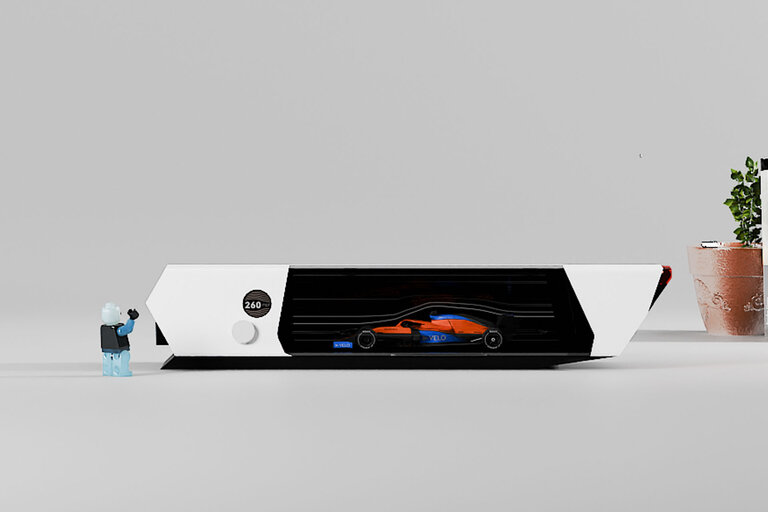
Liability coverage is one of the most common and important types of auto insurance. It can potentially help you avoid a financial disaster if you’re found to be responsible for causing an accident. So, what does liability insurance cover?
What Is Auto Liability Insurance?
Liability insurance is auto insurance coverage that’s mandatory in most states. If you’re the at-fault party in an accident, you’re liable for all the resultant damages. Liability coverage pays for the financial losses of the other parties who are involved in the accident.
What Does Liability Insurance Cover?
Liability insurance refers to coverage for injuries and vehicle damage that other people sustain in an accident that results from your negligence, according to WalletHub. This type of auto insurance comes in the two following forms:
Bodily Injury Liability Coverage
Bodily injury liability coverage doesn’t provide direct protection for you or your vehicle. Instead, it covers the people who suffer injuries in a car accident you cause. It protects you from the damage claims that the injured parties file, such as medical expenses, pain and suffering, lost wages, and sometimes legal fees. The exact types of losses covered may vary from policy to policy and state to state.
As a rule of thumb, you should buy as much bodily injury liability coverage as you can afford. If your liability coverage isn’t enough to cover all the injury-related costs that result from an at-fault accident, you may face lawsuits for the remaining amount, which can put your home and other assets in jeopardy, says Policygenius.
Property Damage Liability Coverage
Property damage liability insurance covers the damage you cause to other people’s property in an accident. This type of insurance doesn’t provide protection for your vehicle. To get coverage for your car, you have to purchase collision or comprehensive coverage.
Generally, property damage liability coverage pays for other people’s repair or replacement costs after you cause damage to their vehicles, homes, buildings, mailboxes, lampposts, and other objects. The types of property covered depend on your policy and coverage limit, so make sure you read your contract carefully or consult your insurance agent.
What Is Excluded from Liability Car Insurance?
According to Allstate, auto liability insurance usually doesn’t reimburse you for the cost of repairing your vehicle after an accident. Instead, you need to get collision coverage. Additionally, liability coverage doesn’t cover vehicle damage that results from other events such as hail. Comprehensive coverage protects you against non-collision damage.
Auto liability insurance also doesn’t extend to financial losses associated with your injuries following an at-fault accident. To get this type of coverage, you should consider buying medical payment coverage. You can seek advice from your insurance agent if you want to know more about auto liability coverage or the minimum car insurance requirements in your state.
What Is the Coverage Limit for Auto Liability Insurance?
Auto liability insurance policies have different bodily injury and property damage coverage limits. These limits are expressed as three numbers, such as 25,000/50,000/20,000 or 25/50/20. The first two numbers are the coverage limits for bodily injury. The first number refers to the maximum amount your auto insurance provider will pay for each injured person in the accident, while the second number is the maximum coverage for the entire accident. The third number is the coverage limit for property damage.
In the above example, your insurance company will pay up to $25,000 for each person’s bodily injury claim. However, if multiple people are injured in the accident, your insurer will only provide a maximum bodily injury coverage of $50,000 for the whole accident. Additionally, the company will pay up to $20,000 in property damages. If the costs incurred exceed these coverage limits, the injured parties may file a lawsuit against you to recover the rest.
If you’re the at-fault party in an accident, remember that auto liability insurance doesn’t pay for your medical bills or damage to your vehicle. While liability coverage is important, it isn’t the only type of car insurance you should purchase. Consider getting personal injury protection and collision coverage to ensure you and your vehicle are protected in the event of an accident.
How Much Liability Insurance Do You Need?
As long as you’re carrying the minimum amount of auto liability insurance required in your state, you aren’t doing anything wrong. To get the best policy, you need to take a number of factors into consideration, Nonetheless, it’s generally recommended that you buy as much liability insurance as you can. This way, you’ll have greater peace of mind both on and off the road.
Bear in mind that opting for higher coverage levels will only slightly increase your auto insurance premiums but can potentially save you a lot of money and trouble in the event of an at-fault accident. Below is an example that shows how a significant increase in liability coverage affects a person’s car insurance cost:
- 25,000/50,000/10,000: $56.25 per month
- 50,000/100,000/25,000: $60.25 per month
- 100,000/300,000/500,000: $64.50 per month
These are the average monthly quotes from eight major auto insurance providers for a 37-year-old single female driver who lives in ZIP code 94561. It’s assumed that she has a 2008 Honda Accord LX and drives 12,000 to 15,000 miles per year.
How Liability Insurance Works in an Accident
Suppose you’re responsible for an accident that caused injuries to three people in a vehicle. You have a per-person bodily injury liability coverage limit of $50,000 and a per-accident bodily injury limit of $100,000. If the first injured person has medical bills totaling $40,000, the second person needs to pay $30,000, and the third person incurs $25,000, you probably have enough coverage.
However, the story will change if the total medical cost for the three people is $150,000. In this case, your bodily injury liability insurance will pay $100,000 toward the medical bills, and you may have to pay the remaining $50,000 out of your pocket.
If you cause an accident, you’re responsible for any damages that exceed your auto liability coverage limits. This is why you should consider increasing your liability coverage limits above the minimum requirements in your state.
Check this out if you need additional information, resources, or guidance on car insurance.
Sources:
https://wallethub.com/edu/ci/liability-car-insurance/7300
https://www.policygenius.com/auto-insurance/liability-car-insurance/
https://www.allstate.com/tr/car-insurance/liability-car-insurance-cover.aspx
https://www.caranddriver.com/car-insurance/a35865225/cost-for-comprehensive-car-insurance/
https://www.caranddriver.com/car-insurance/a35710606/benefits-of-car-insurance/
https://www.caranddriver.com/car-insurance/a35726776/how-does-insurance-work-in-a-car-accident/
This content is created and maintained by a third party, and imported onto this page to help users provide their email addresses. You may be able to find more information about this and similar content at piano.io
Source link





